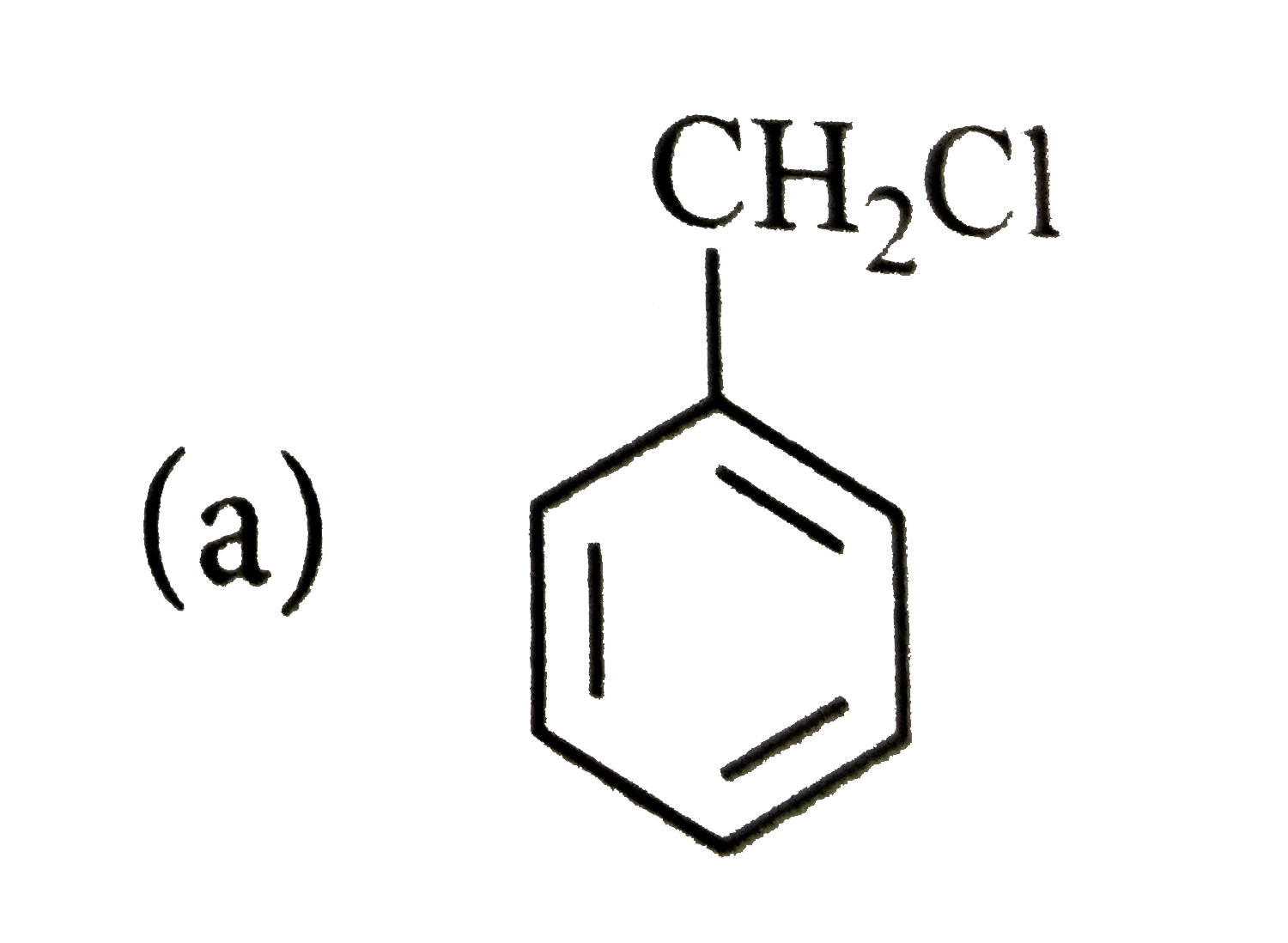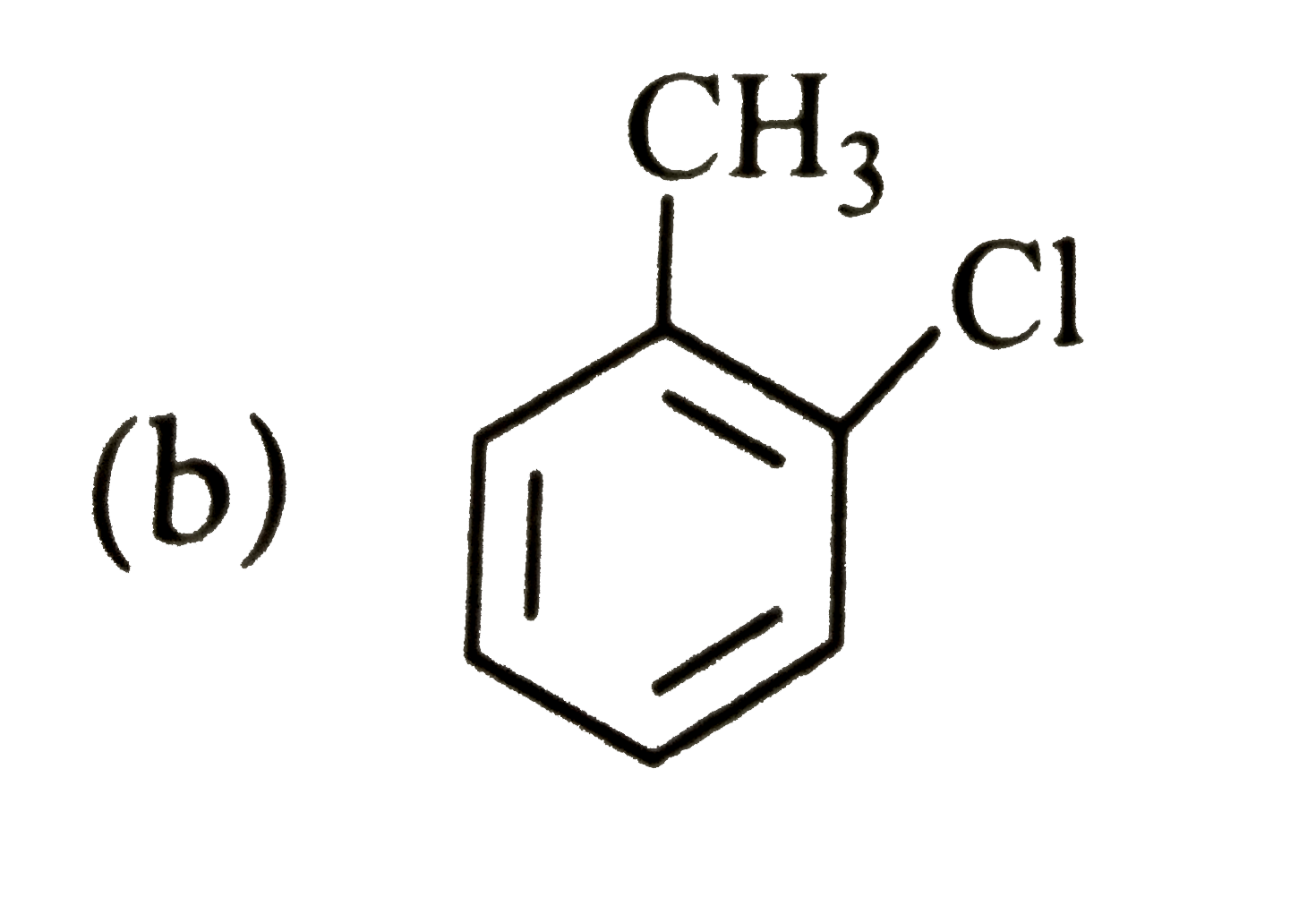Toluene react with a halogen in the presence of iron (III) chloride giving ortho andpara halo compounds. The reactions is
electrophilic elimination reaction
electrophilic substitution reaction
free radical addition reaction
nucleophilic substitution reaction
The correct Answer is:B
To solve the problem of how toluene reacts with halogen in the presence of iron (III) chloride to yield ortho and para halo compounds, we can break down the reaction into several steps:
1. Identify the Reactants:
- The main reactant is toluene (C6H5CH3), which contains a methyl group (–CH3) attached to a benzene ring.
- The halogen used in the reaction is typically chlorine (Cl2), and iron (III) chloride (FeCl3) acts as a catalyst.
2. Role of Iron (III) Chloride:
- Iron (III) chloride (FeCl3) is a Lewis acid and helps in generating the electrophile (Cl+). It interacts with Cl2 to form Cl+ and Cl-.
- The reaction can be represented as:
Cl2+FeCl3→Cl++FeCl−4
3. Formation of the Electrophile:
- The generated Cl+ ion is a strong electrophile that can attack the electron-rich benzene ring of toluene.
4. Electrophilic Attack on Toluene:
- Toluene has a methyl group, which is an electron-donating group. This increases the electron density on the ortho and para positions of the benzene ring.
- The Cl+ can attack the benzene ring at either the ortho (adjacent) or para (opposite) positions relative to the methyl group.
5. Formation of Ortho and Para Products:
- When Cl+ attacks the ortho position, it displaces a hydrogen atom, resulting in the ortho-chlorotoluene:
C6H5CH3+Cl+→C6H4Cl (ortho)CH3+H+
- When Cl+ attacks the para position, it also displaces a hydrogen atom, resulting in para-chlorotoluene:
C6H5CH3+Cl+→C6H4Cl (para)CH3+H+
6. Conclusion:
- The overall reaction can be summarized as:
C6H5CH3+Cl2FeCl3−−−→C6H4Cl (ortho)CH3+C6H4Cl (para)CH3+H+
- This is an example of an electrophilic aromatic substitution reaction.
- The main reactant is toluene (C6H5CH3), which contains a methyl group (–CH3) attached to a benzene ring.
- The halogen used in the reaction is typically chlorine (Cl2), and iron (III) chloride (FeCl3) acts as a catalyst.
- Iron (III) chloride (FeCl3) is a Lewis acid and helps in generating the electrophile (Cl+). It interacts with Cl2 to form Cl+ and Cl-.
- The reaction can be represented as:
Cl2+FeCl3→Cl++FeCl−4
- The generated Cl+ ion is a strong electrophile that can attack the electron-rich benzene ring of toluene.
- Toluene has a methyl group, which is an electron-donating group. This increases the electron density on the ortho and para positions of the benzene ring.
- The Cl+ can attack the benzene ring at either the ortho (adjacent) or para (opposite) positions relative to the methyl group.
- When Cl+ attacks the ortho position, it displaces a hydrogen atom, resulting in the ortho-chlorotoluene:
C6H5CH3+Cl+→C6H4Cl (ortho)CH3+H+
- When Cl+ attacks the para position, it also displaces a hydrogen atom, resulting in para-chlorotoluene:
C6H5CH3+Cl+→C6H4Cl (para)CH3+H+
- The overall reaction can be summarized as:
C6H5CH3+Cl2FeCl3−−−→C6H4Cl (ortho)CH3+C6H4Cl (para)CH3+H+
- This is an example of an electrophilic aromatic substitution reaction.
Topper's Solved these Questions
- BOOK - NCERT FINGERTPS ENGLISHCHAPTER - HALOALKANES AND HALOARENESEXERCISE - Assertion and reason15videos
HALOALKANES AND HALOARENES
- BOOK - NCERT FINGERTPS ENGLISHCHAPTER - HALOALKANES AND HALOARENESEXERCISE - Polyhalogen Compounds6videos
HALOALKANES AND HALOARENES
- BOOK - NCERT FINGERTPS ENGLISHCHAPTER - HALOALKANES AND HALOARENESEXERCISE - Higher order thinking skills8videos
HALOALKANES AND HALOARENES
- BOOK - NCERT FINGERTPS ENGLISHCHAPTER - GENERAL PRINCIPLES AND PROCESSES OF ISOLATION OF ELEMENTSEXERCISE - Assertion And Reason15videos
GENERAL PRINCIPLES AND PROCESSES OF ISOLATION OF ELEMENTS
- BOOK - NCERT FINGERTPS ENGLISHCHAPTER - POLYMERS EXERCISE - NCERT Exemplar9videos
POLYMERS
Similar Questions
Knowledge Check
- Question 1 - Select One
The reaction of toluene with chlorine in the presence of light gives :
A B
B C
C D
D
- Question 2 - Select One
Choose the correct answer from the options given below :
Anhydrous iron(III) chloride is prepared by:ADirect combinationBSimple displacementCDecompositionDNeutralization - Question 3 - Select One
The reaction of toluene with chlorine in the presence of iron and in the absence of light yields ………
A B
B C
C Dmixture of (b) and (c )
Dmixture of (b) and (c )
Toluene reacts with chromyl chloride to form :
View SolutionIron react with hydrogen chloride gas forming_______[iron [II] chloride , iron [III] chloride]and hydrogen .The reaction is an example of ________ [double decomposition , synthesis , single displacement].
View SolutionBenzene reacts with n-propyl chloride in the presence of anhydrous AlCl3 to give predominantly
View SolutionThe reaction of toluene with chlorine in the presence of iron and in the absence of light yields ………
View SolutionOn treatment with chlorine in presence of sunlight toluene gives the product .
View Solution

